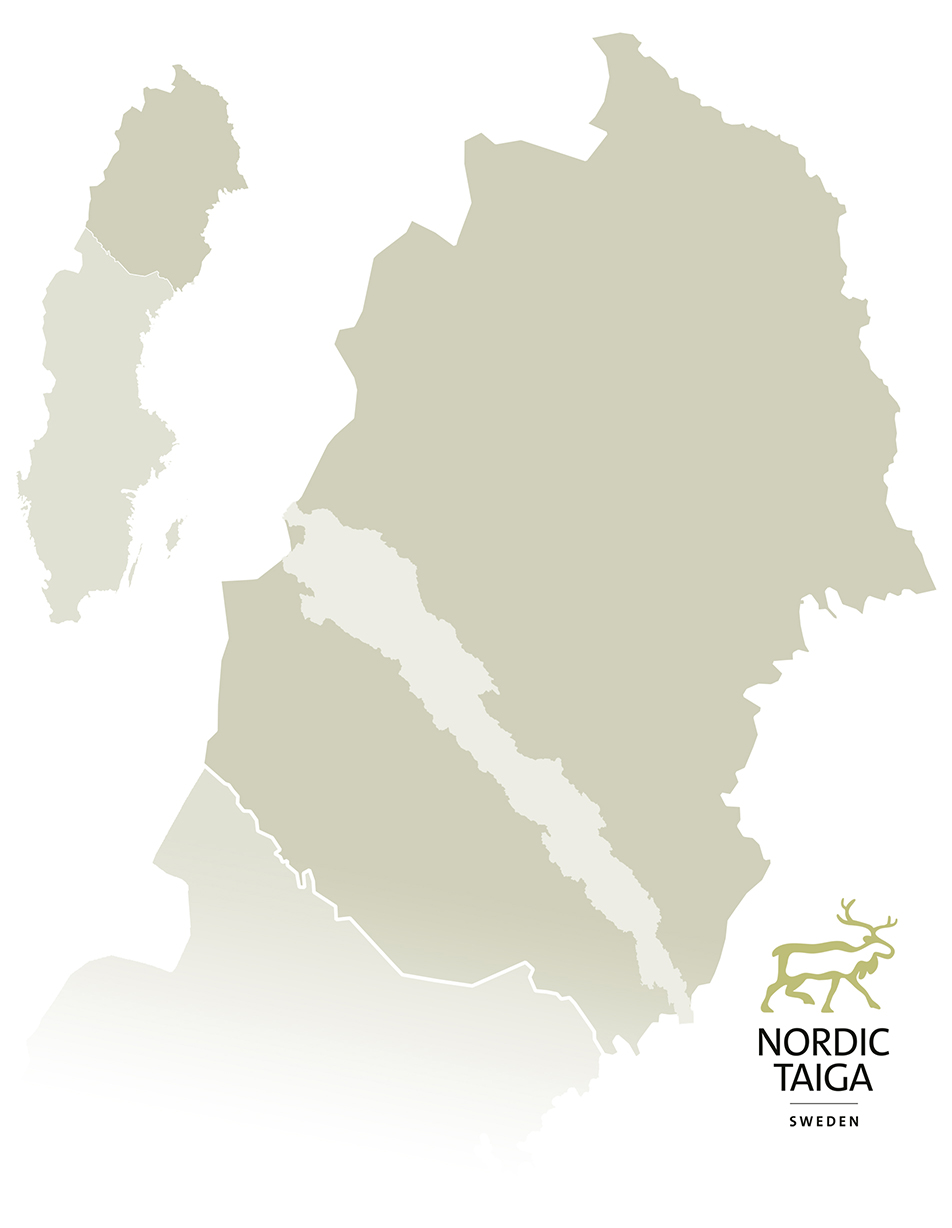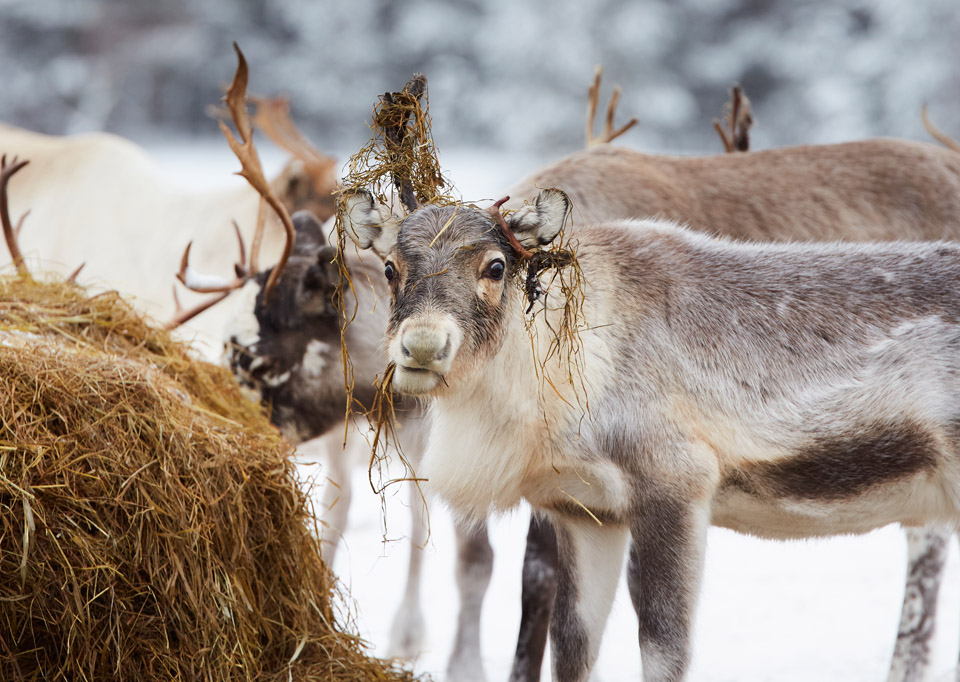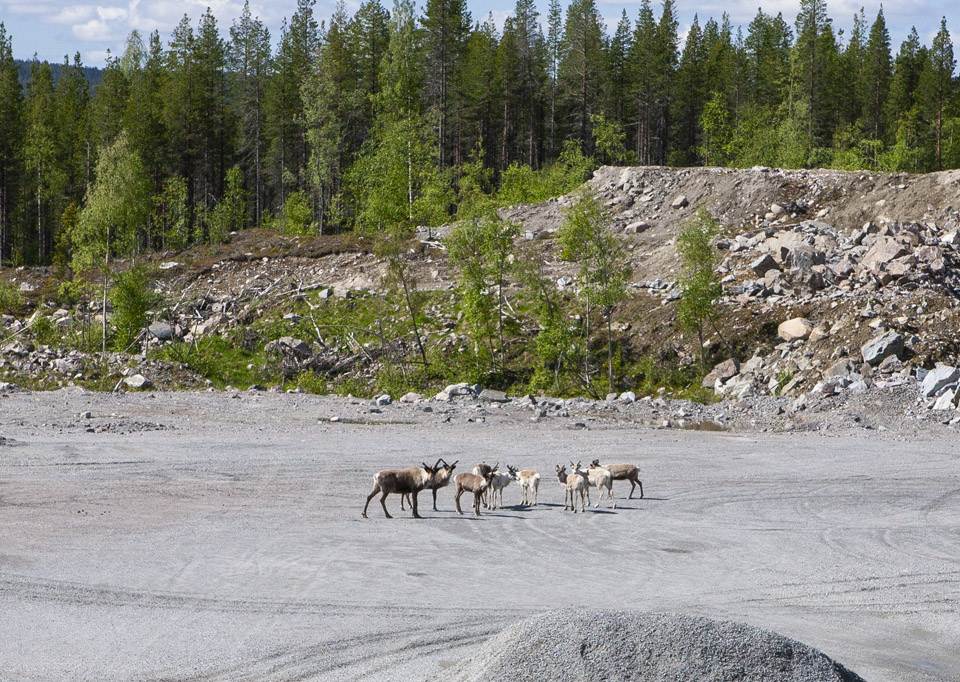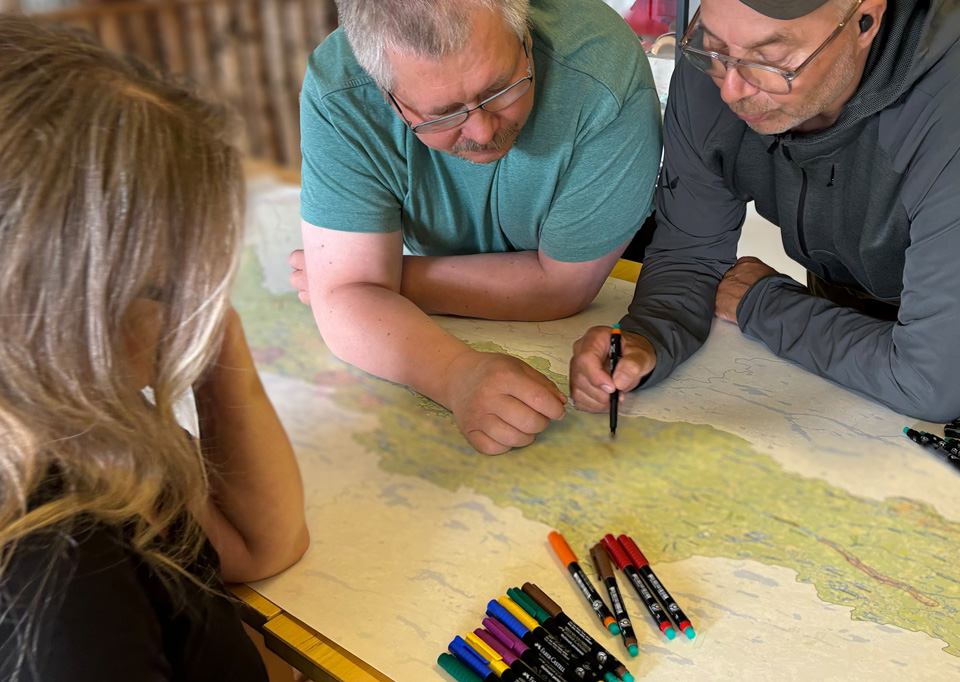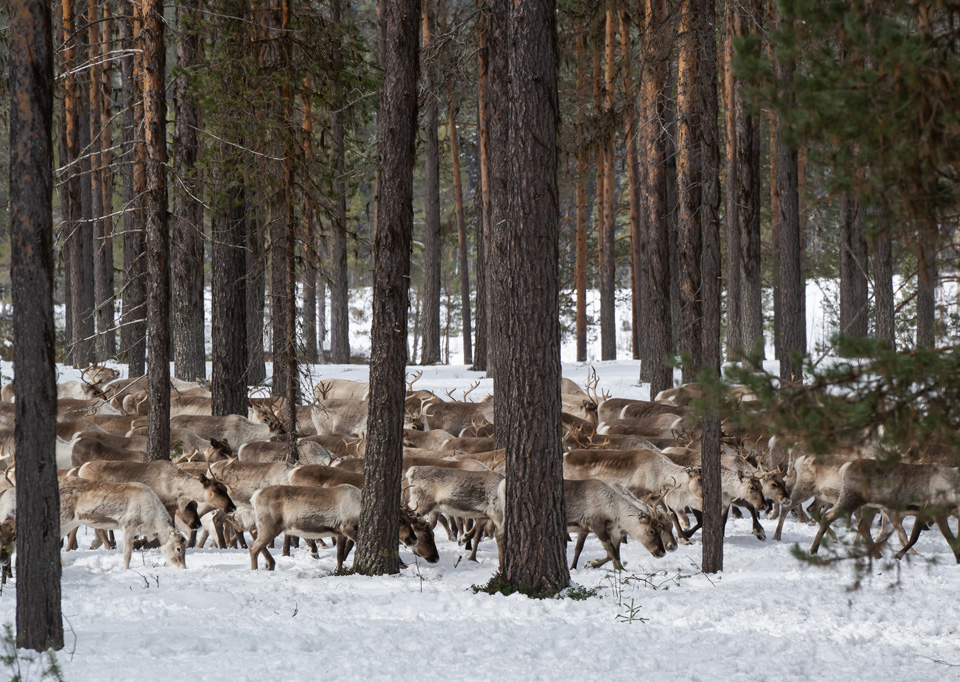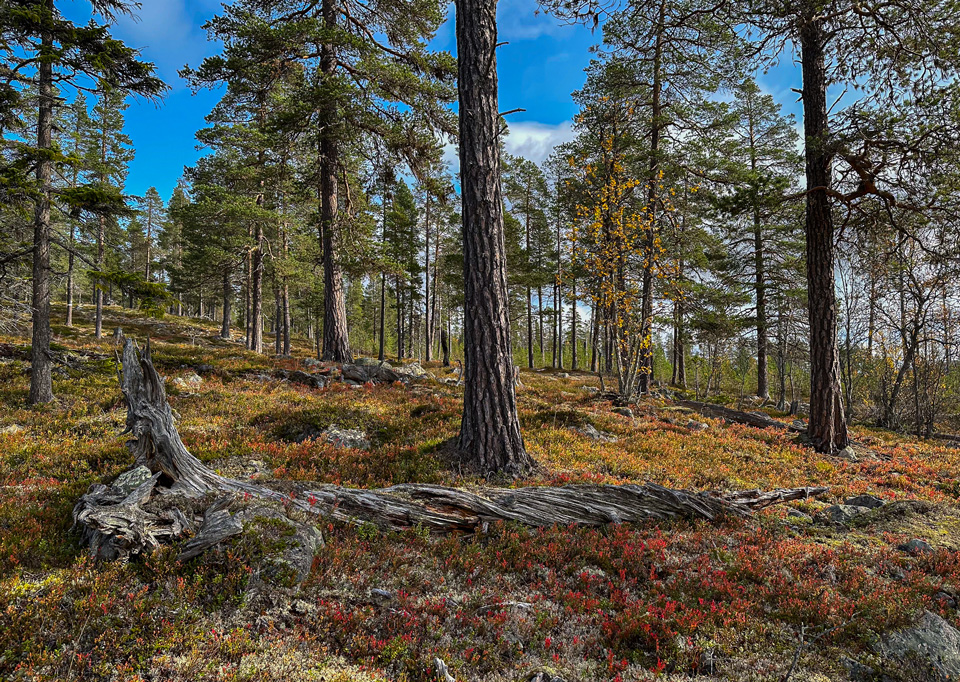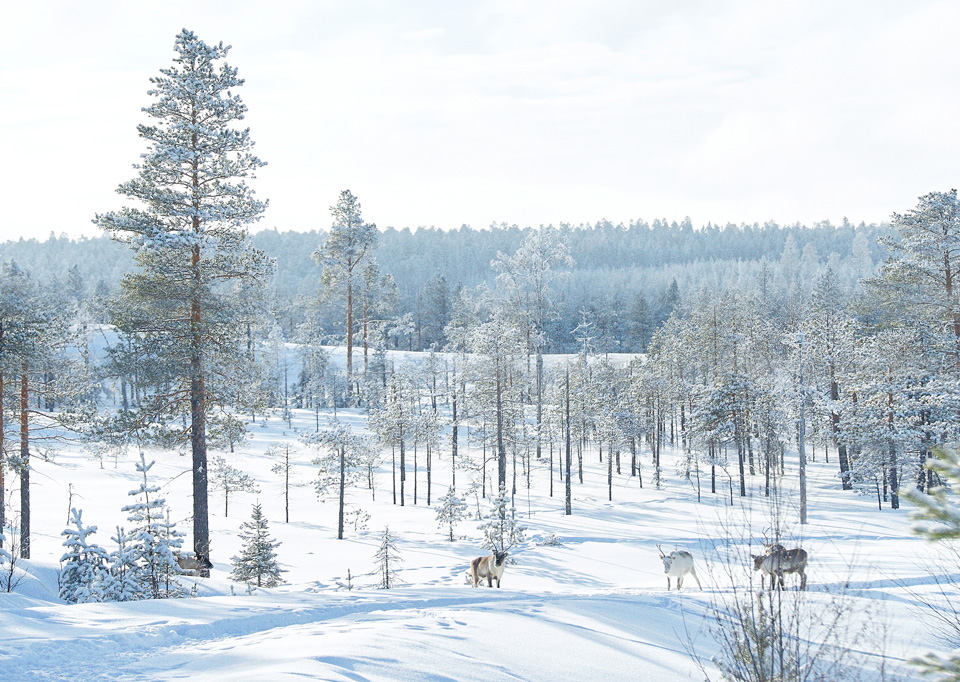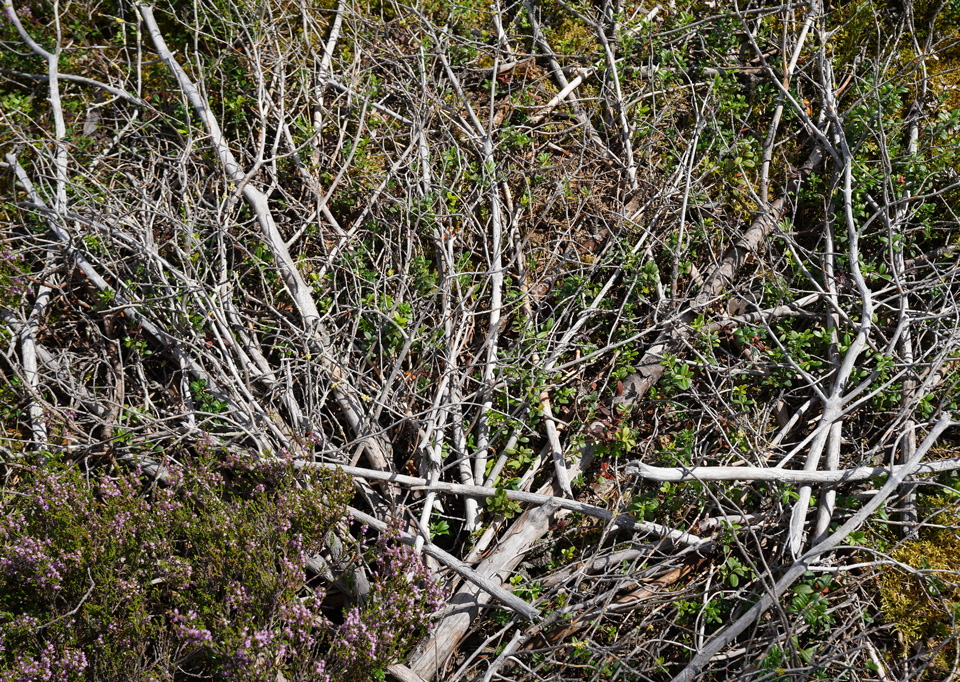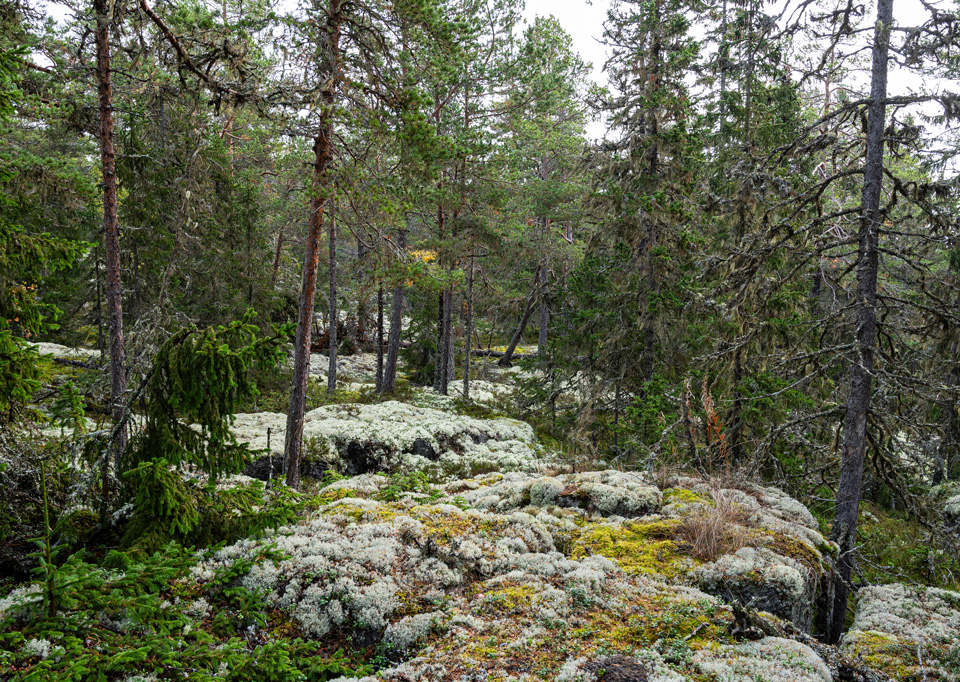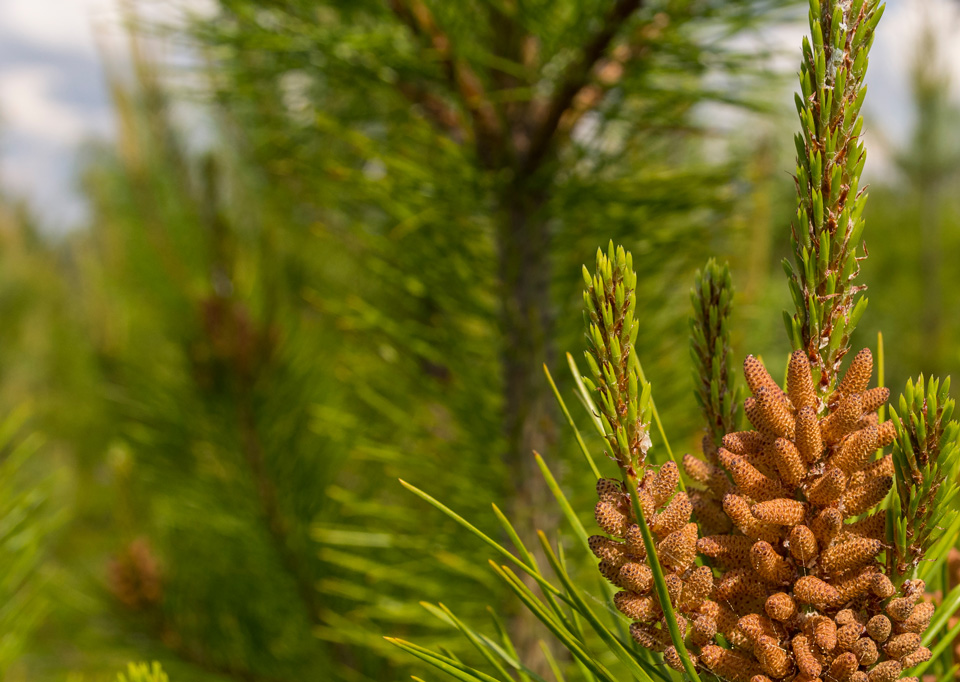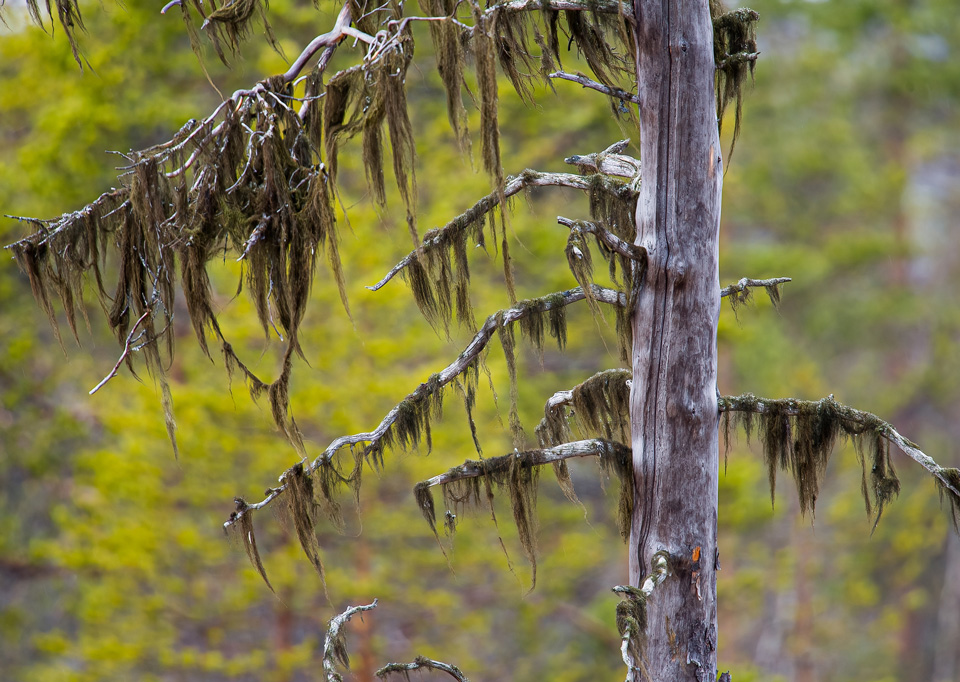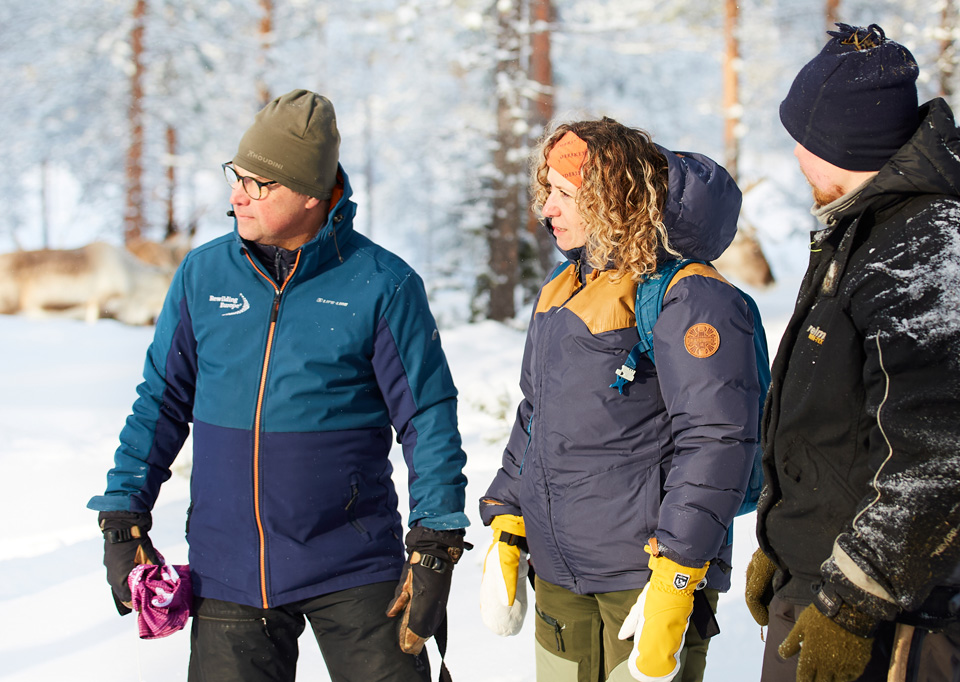Background to initiative
Reindeer play a central role in northern boreal forest ecosystems, but this is decreasing as a result of landscape fragmentation from forestry, industrial land use, and climate change. Migration routes have been cut off, natural grazing lands have been lost, and reindeer husbandry are becoming more reliant on supplementary feeding and truck transport. This has implications not only for the ecosystems that they contribute to creating and maintaining, but also for the viability of Sámi reindeer husbandry.
To address these challenges, Rewilding Sweden is in partnership with Sámi communities and the Vindelälven–Juhttátahkka Biosphere organisation. Together, we are striving to revitalise the reindeer’s ecological role by restoring and reconnecting forests in the Vindelälven, Laisälven, and lower Umeälven valleys. At the heart of this effort is a dedicated working group, made up of nominated members from each of the initiative’s partner organisations. The group meets on a regular basis to build trust, map out degraded areas, and come up with concrete restoration actions. The Sámi contribute detailed knowledge of reindeer needs and forest ecosystems. Ecological expertise is provided by Rewilding Sweden, and the Biosphere Reserve organisation offers an arena to engage local stakeholders. The partnership’s greatest strength is the potential to forge tighter links, both within and between Sámi groups, uniting behind a shared 2050 vision: to restore functional reindeer grazing corridors from the mountains on the Norwegian border in the west to the Baltic Sea in the east.
Funding: The Swedish Postcode Lottery Foundation, Private donationsCollaborating organisations: Vindelälven-Juhttátahkka Biosphere Organisation, Local Sámi communities, County Administrative Board of Västerbotten
